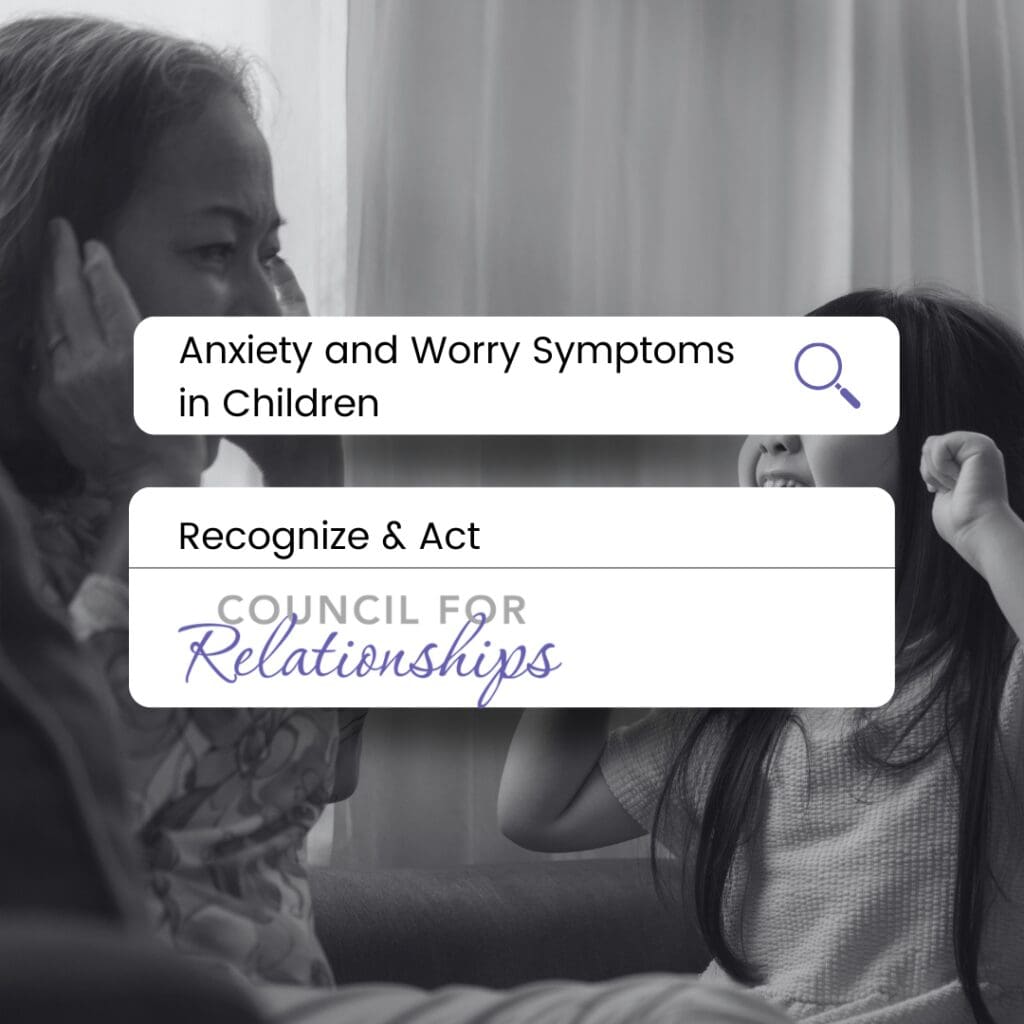Anxiety and Worry Symptoms in Children
When children feel anxious, they may not show it in ways adults recognize. Instead of expressing their worries, they might refuse to go to school, avoid friends, or complain of stomachaches. Understanding these anxiety and worry symptoms in children can help parents, caregivers, and family members identify when a child may need support.
Because childhood anxiety often goes unnoticed, learning to spot these subtle signs makes a big difference. Keep reading to discover common symptoms of anxiety in children and practical ways to help them feel secure and supported.
An Introduction to Recognizing Anxiety and Worry Symptoms in Children
Children often struggle to express anxiety as adults do. While adults may dismiss nervousness or trouble sleeping as “butterflies,” children show anxiety differently, usually avoiding school or complaining of stomachaches. Recognizing these behaviors as signs of anxiety and fears can help family members understand when a child may need support. Symptoms can indicate anxiety, other mental health issues, or conditions like ADHD.
Statistics show that 15% to 20% of children face anxiety disorders, making it essential for parents and caregivers to recognize these signs and respond proactively. Here are some anxiety and worry symptoms in children and how you can help them manage them.
Common Anxiety and Worry Symptoms in Children
1. Refusal to Eat
When children experience anxiety, they may avoid eating or play with food instead of eating it. They might return from school with an untouched lunchbox or give away food to friends. If family members notice this pattern, they can contact the school and ask teachers to watch the child at lunch. Consulting a mental health professional can also help rule out other mental health conditions or specific phobias around food.
Offering foods the child enjoys can create a sense of comfort around mealtimes. Involve the child in choosing or preparing meals to encourage bonding and ease their worries.
2. Avoiding People, Places, or Activities
Children who eagerly explore and interact may withdraw or show signs of social phobia or social anxiety disorder when faced with certain people, places, or events, like their first day at school. This avoidance can point to anxiety or separation anxiety disorder. Instead of forcing interactions, gently ask the child what bothers them. Listening openly shows them that their feelings matter.
Creating a safe space for children to share their anxiety and fears helps build trust and fosters resilience. Children often feel more secure knowing they can express their concerns without judgment.
Additional Anxiety and Worry Symptoms in Children
3. Worrisome or “Bad” Thoughts
Children often experience happy “firsts” (like new friends) and difficult “firsts” (like losing a loved one). During such times, children may develop negative thoughts or fears, such as wondering if they or someone they love might die. These thoughts can create deep anxiety, leading to intense fear or even panic attacks in some cases.
When children experience troubling thoughts, reassure them with age-appropriate explanations, like “I’m here to take care of you.” Helping children process these emotions encourages them to talk openly about their feelings, which can reduce anxiety.
4. Acting Out
Some children with anxiety may respond by acting out, such as talking back, becoming aggressive, or withdrawing completely (as seen in selective mutism). This behavior reflects their internal struggle and often stems from a “fight or flight” response. Instead of responding with frustration, guide them toward positive coping skills through talk therapy or cognitive behavioral therapy (CBT), which many mental health professionals recommend for children facing types of anxiety disorders like panic disorder or social anxiety disorder.
Acknowledge their feelings, but establish boundaries for appropriate behavior. For instance, try saying, “I see you’re upset, but hitting is not okay. Let’s go for a walk and talk about it.” This approach validates their feelings and teaches them alternative ways to cope with distress.
5. Sweating
Sweating is a normal response to stress, but excessive sweating or frequently changing clothes can indicate social phobia or anxiety if no medical condition is present. Some children with anxiety disorders may experience sweaty palms or feet, especially in situations that make them uncomfortable.
Identify when sweating occurs to understand its trigger better. If it happens after school, for example, it might signal mental health issues related to social anxiety or bullying. Reassuring the child and acknowledging their feelings can ease embarrassment, and scheduling time with a mental health professional may help them manage these symptoms effectively.
About Council for Relationships
Council for Relationships (CFR) offers expert support for children, adolescents, and families dealing with anxiety and worry symptoms in children and other mental health conditions. Our Child, Adolescent & Family Services program provides therapy for young clients facing a range of concerns, from anxiety and specific phobias to separation anxiety disorder and panic disorder.
If you’re seeking help for your child’s mental well-being, you can get matched with a therapist who fits your family’s needs and budget. Our Therapist & Psychiatrist Directory helps connect you with CFR providers near you who specialize in individual, couples, or family therapy and psychiatry services.
If you are experiencing an emergency, please contact 911 or your nearest emergency services.
More from CFR: Supporting Children’s Mental Health and Well-being
Do you need support in recognizing and addressing anxiety and worry symptoms in children? CFR therapists provide professional guidance for parents, caregivers, and family members dealing with mental health issues like anxiety, panic attacks, specific phobias, and more. Whether you’re looking for tips on managing anxiety in children or guidance on handling mental illness in a supportive way, our therapists can help.
Visit our blog for practical advice on mental health, therapy techniques, and resources for building resilience in children and families.
Stay connected with the latest in child and adolescent mental health. Sign up for our mailing list to receive updates on therapy services, parenting tips, and expert advice on supporting children and families in their mental health journey.

